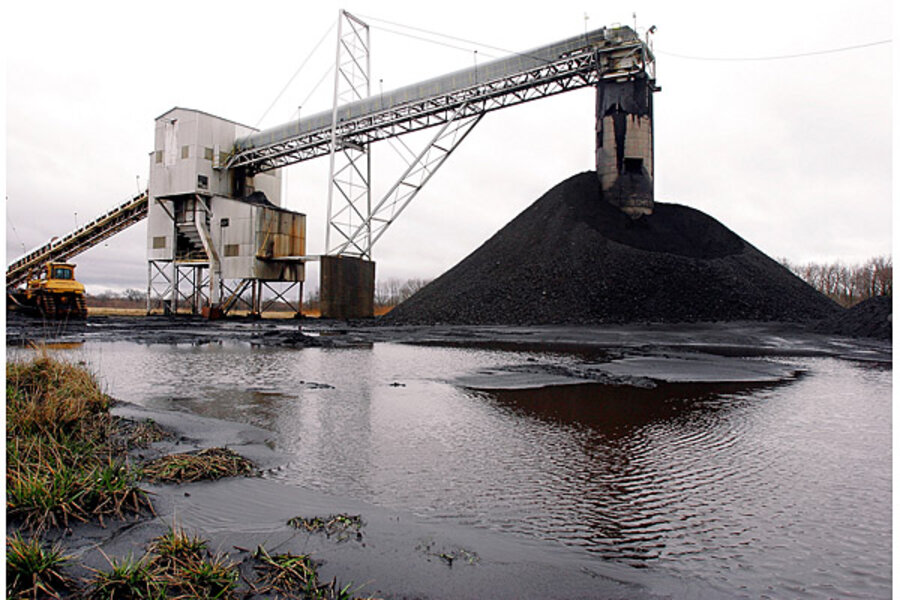Is the writing on the wall for U.S. coal?
Loading...
What will power your plug-in car in a few years? If new EPA regulations go into effect, it may not be coal.
Next week, the EPA is expected to set limits on greenhouse gas emissions by new power plants, The New York Times reports.
These new standards may deter the construction of new coal plants.
While full details of the proposal have not been released, the EPA is expected to set separate limits for coal and natural-gas plants.
Natural-gas plants would potentially be allowed to emit up to 1,000 pounds of carbon dioxide per megawatt-hour, while coal plants would be allowed to emit 1,400 pounds per mWh.
That may seem as if coal is getting a break--but, on average, the most advanced coal plants still emit 1,600 pounds of CO2 per mWh. Comparable natural-gas plants, on the other hand, only emit 790 pounds.
The solution for coal plants would seem to be carbon-capture technology, which involves scrubbing a power plant's emissions before they reach the smokestack and storing and removing the resulting carbon.
However, the American Public Power Association, a consortium of publicly-owned utilities, believes that technology will not be commercially feasible for at least eight years.
If the EPA's proposed CO2 emission caps go into effect, utility companies may decide that coal-fired plants just aren't worth the trouble, with supplies natural gas is already cheap and abundant.
According to the Energy Information Administration, none of the 136 new or expanded power plants opening this year is powered by coal. Only two of 127 plants expected to open next year will be coal-powered.
And the lack of new coal plants trend could contribute to an already-growing glut of coal.
With domestic demand flagging, the U.S. coal industry had hoped to increase exports. Now, it is scaling back its export goals due to lethargic foreign demand. Coal exports are expected to drop 5 percent this year, and to continue dropping in years to come.
A major factor is China's decision to ban construction of new coal plants around Beijing, Shanghai, and Guangzhou to control air pollution. China also plans to start supplementing electricity generated by coal with greener forms of energy.
Electric car skeptics believe coal-generated electricity negates their green benefits. But with coal on the decline, that argument could become less relevant.







